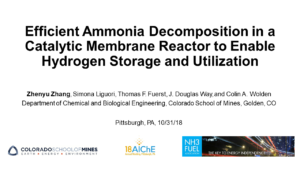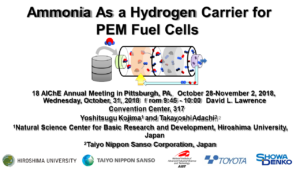Presentation
Catalytic Membrane Reactors for Efficient Delivery of High Purity Hydrogen from Ammonia Decomposition
The deployment of fuel cell electric vehicles is constrained by the paucity of hydrogen fueling stations and price, which is dominated by the costs of hydrogen storage and transportation. With more hydrogen per volume than liquid H2 and an extensive distribution infrastructure in place, ammonia is a promising vector for efficient hydrogen distribution. In this talk we describe the development of innovative catalytic membrane reactor (CMR) technology for the delivery of high purity H2 from ammonia cracking. The CMR integrates state-of-the art catalysts with thin metal membranes in an innovative design. Conventionally, the catalyst is supplied to CMRs in the…


